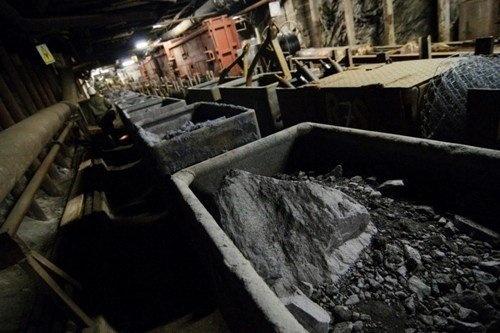In the past few years, uranium has become one of the most significant and sought after energy minerals
Several countries around the world are reducing their heavy dependence on fossil fuels in a bid to utilise non-carbon energy resources more fully. The growth in demand for non-carbon energy resources means that uranium is becoming a viable alternative once again.
Engineering and project delivery firm AMEC Minproc (AMEC) business development executive for Africa, Liam Cafferty, says that the next five years will be a period of high activity for uranium and the nuclear power market.
AMEC
AMEC is well positioned to take advantage of this high activity with proven capabilities in the development of uranium resources. The company has been involved in eight uranium projects located in various regions across Africa and is currently undertaking two uranium studies for projects in Namibia.
“AMEC’s experience across a number of uranium studies and projects ensures a depth of capability, particularly in process development,” says Cafferty.
AMEC technical manager for Africa, Steve Amos, says that the company has extensive experience in the design and operation of numerous uranium extraction and purification technologies. “We have managed a number of testwork programmes aimed at identifying and selecting the best combination of process technologies to produce an optimum solution for each client,” explains Amos.
Selection
He explains that each orebody is different and consideration must be given to lithology, mineralogy, grade and impurities to derive maximum benefit.
“Selection of the best combination of process technologies is done in the context of safety (during construction and operation), operability and maintainability, capital and operating cost and recovery. Some of the process technologies in which we have such experience include: comminution, acid vs. alkali leaching (including oxidant selection), heap vs. agitated leaching, atmospheric vs. pressure leaching, downstream recovery and purification processes such as solid/liquid separation, solvent extraction, ion exchange (fixed vs. fluidised bed), Counter Current Decantation (CCD) vs. filtration, ammonia and peroxide precipitation and final product filtration, drying and calcination,” explains Amos, “This quality offering is a significant differentiator in the process plant development segment.”
Amos adds that AMEC’s uranium capability covers a range of services from geological assistance and exploration - including geotechnical and hydrological aspects - through sample selection for testwork program development and management, to mine and plant design/development and tailings management. These capabilities are dispersed across AMEC’s global offices and can be drawn upon during client engagement when necessary,” explains Amos.
Demand, supply and pricing
Nuclear power is today only a small part of Africa’s energy supply, but its contribution will grow in the future as African countries become more interested in uranium as a source of energy.
By 2020, Egypt, for example, aims to build a 1000-MW nuclear power plant on the Mediterranean coast, which would produce more electricity than the Aswan Dam. Thus, like Egypt, the number of nuclear power plants should grow steadily over the next decade on the African continent.
In order for South Africa to meet future base load requirements, nuclear energy would more than likely have to form part of the country’s overall energy mix.
African production
Uranium production already plays an important role in the African economy with Niger, Namibia and South Africa generating up to an estimated 18 per cent of the world's annual production. The potential for further uranium production in Africa is vast owing to large untapped uranium resources located in various regions across the continent.
Commenting on uranium’s demand vs. supply and how this is currently affecting the price, Cafferty notes that new demand is emerging from China, India and Russia and as a result, the current and forecast demand for uranium has driven the price upwards.
He points out that if the uranium price is sustainable at current pricing levels, or there is upside potential, the appetite for developing uranium production will remain strong and many of the lower grade resources may be viable. “Almost any uranium resource has the potential to be exploited in the current demand-driven scenario,” concludes Cafferty.




